Table of Contents
ToggleIn a world where to-do lists multiply faster than rabbits, mastering task prep can feel like a Herculean feat. But what if there’s a secret sauce to make it all easier? Enter the task prep hack—a game-changing strategy that’ll have you breezing through your day like a caffeinated squirrel on a mission.
Imagine tackling your tasks with the finesse of a ninja, effortlessly dodging distractions while checking off items like a pro. With the right prep techniques, chaos transforms into clarity, and productivity skyrockets. So buckle up and get ready to unlock the secrets that’ll turn your task list from a daunting monster into a manageable pet. Who knew getting organized could be this much fun?
Overview of Task Prep Hacks
Task prep hacks streamline productivity. These hacks focus on simplifying the process of managing to-do lists. One effective method involves breaking tasks into smaller, actionable steps. When individuals divide larger projects into mini-tasks, they can tackle them more easily.
Prioritization plays a critical role in task management. Recognizing urgent tasks helps individuals address what matters most first. Implementing the Eisenhower matrix can aid in distinguishing between urgent and important tasks. This tool increases clarity by categorizing tasks into four quadrants: urgent and important, important but not urgent, urgent but not important, and neither urgent nor important.
Another useful hack centers on setting specific time blocks. Allocating dedicated time for each task prevents distractions. By designating focused periods for work, individuals often see a marked improvement in productivity. Techniques like the Pomodoro Technique can prove helpful, encouraging short breaks after focused periods of work.
Utilizing technology offers additional support. Task management apps, such as Todoist or Trello, enhance organization. These platforms allow for tracking progress and setting reminders, which can further reinforce commitment to tasks. With their customizable features, users can adapt the apps to fit personal workflows.
Implementing a review process aids in maintaining momentum. Weekly reviews of completed tasks can highlight achievements and provide motivation. Adjusting future tasks based on past performance ensures continuous improvement.
Incorporating these task prep hacks can significantly reduce overwhelm. They prepare individuals to approach their tasks methodically, turning chaos into clarity. Embracing these techniques results in a more organized and productive work routine.
Benefits of Using Task Prep Hacks
Task prep hacks offer significant advantages for individuals looking to streamline their workload. They can transform the chaos of a lengthy task list into a well-structured, manageable plan.
Increased Productivity
Increased productivity stems from effective task preparation. Breaking tasks into smaller steps encourages a focused approach. Individuals can tackle larger projects with a clear action plan. Prioritization tools, such as the Eisenhower matrix, help distinguish urgent tasks from important ones. Utilizing time blocks optimizes focus and minimizes distractions. Techniques like the Pomodoro Technique enhance time management, allowing for concentrated work periods. Consequently, consistency in executing these strategies leads to tangible results. Enhanced organization through task management apps tracks progress and facilitates completion. A clear roadmap fosters a more proactive work environment.
Reduced Stress Levels
Reduced stress levels result from organized task management strategies. Clarity in task listings diminishes feelings of overwhelm. By prioritizing tasks, individuals can focus on what truly matters, minimizing anxiety. Each completed task provides a sense of achievement, further alleviating stress. Implementing regular review sessions fosters a positive feedback loop, reinforcing productivity. Additionally, preparation allows for anticipation of potential challenges, enabling proactive adjustments. Individuals can enjoy a more balanced approach to work when they feel prepared. Implementing technology aids in maintaining organization, offering accessible tools for easy tracking of progress. An organized workspace and digital environment contributes significantly to lowering stress.
Popular Task Prep Hacks
Task prep hacks offer practical ways to enhance productivity and manage workloads effectively.
The Pomodoro Technique
The Pomodoro Technique enhances focus by encouraging short, timed work sessions. Each session lasts 25 minutes, followed by a five-minute break. This structure promotes sustained attention while limiting fatigue. Individuals using this method often report increased productivity and motivation. After completing four Pomodoros, a longer break of 15-30 minutes follows, allowing for recovery and reflection. Many people find that breaking tasks into these manageable intervals makes overwhelming projects seem less daunting. Consistency in applying this technique reinforces task prioritization, ensuring important tasks receive dedicated attention.
Time Blocking
Time blocking involves scheduling specific periods for different tasks throughout the day. This method allocates dedicated time slots to specific responsibilities, preventing multitasking and minimizing distractions. Each block serves as a focused period to tackle tasks, driving efficiency and organization. By visually organizing the day, individuals can prioritize their most important work first. Flexibility within these blocks allows for adjustments while maintaining overall structure. Many users of time blocking experience reduced procrastination and stress, ultimately leading to clearer, more actionable task lists. This strategy enables a disciplined approach to task management and enhances overall productivity for various projects.
How to Implement Task Prep Hacks
Effective task prep involves creating systems that enhance productivity and organization. Prioritization and a clear workspace can turn chaos into clarity.
Setting Up Your Workspace
A well-organized workspace contributes significantly to productivity. Start by decluttering the area; a clean environment minimizes distractions. Combine tools and resources used regularly within arm’s reach to reduce time spent searching. Utilize vertical storage solutions to free up desk space, promoting an environment conducive to focus. Light sources and comfortable seating can also enhance concentration, creating a space that invites productivity. Encourage personalization; a few personal items can boost motivation and provide a sense of comfort.
Creating a Task List
Developing a structured task list streamlines workflow by defining priorities. Begin by writing down all tasks to visualize workload clearly. Sort tasks based on urgency and importance using methods like the Eisenhower matrix; this enhances the ability to see which tasks demand immediate attention. Break larger projects into smaller, actionable steps for better manageability. Assign specific time blocks to each task, allowing for dedicated focus and minimizing overload. Review and revise the task list regularly to maintain an accurate overview and adapt to changes, ensuring continuous progress.
Embracing task prep hacks can revolutionize productivity and transform how individuals approach their daily responsibilities. By breaking tasks into manageable steps and utilizing techniques like time blocking and the Pomodoro Technique, they can create a focused work environment that minimizes stress.
Incorporating technology through task management apps further streamlines organization and enhances progress tracking. Regularly reviewing completed tasks not only maintains momentum but also reinforces a sense of achievement.
Ultimately, these strategies empower individuals to tackle their to-do lists with confidence and clarity, fostering a more balanced and productive work routine. Adopting these methods can lead to a more organized life and a greater sense of accomplishment in both personal and professional endeavors.







